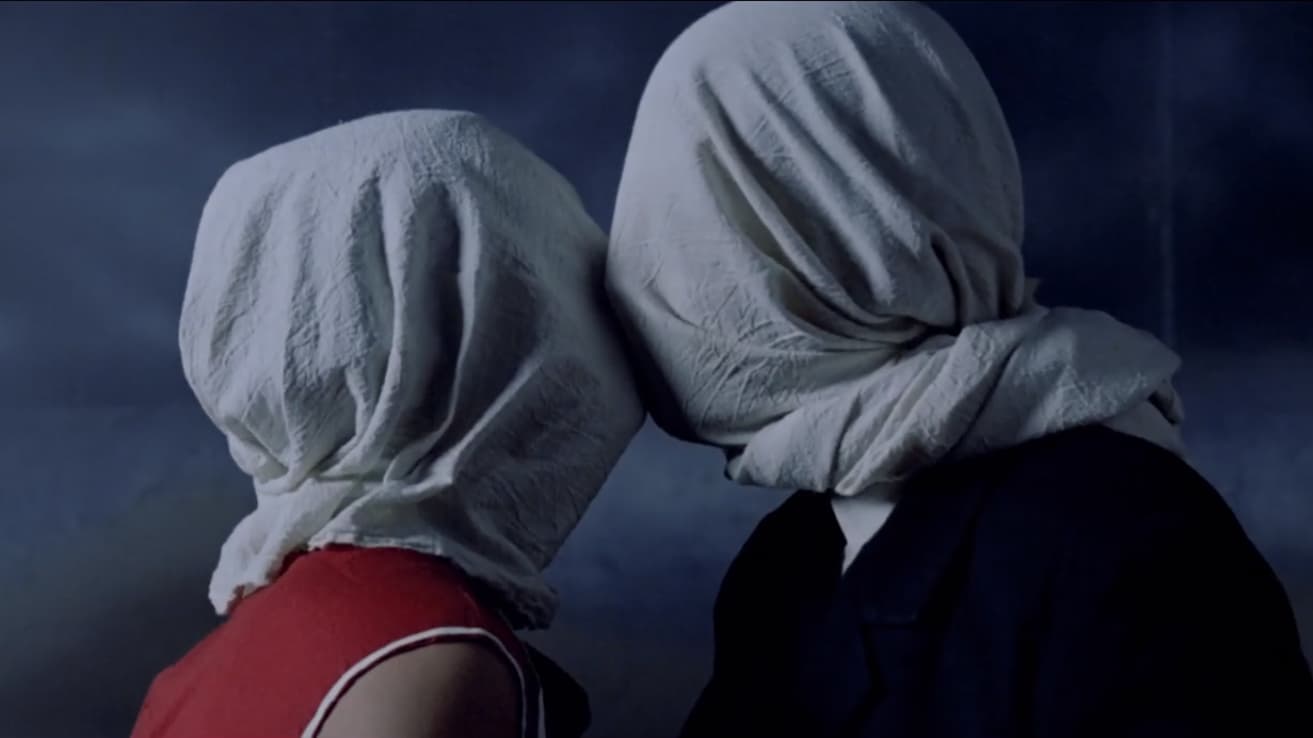
The countries that integrate Latin American cinema don’t have the same budget as Hollywood to produce science fiction films with great special effects. From the filmmaking point of view, the amount of money that is needed to produce a film that respects the canons of the genre far exceeds the kind of budget that is used for other genres that are usually made among the Latin American borders.
However, in this list there are films that don’t count only on special effects. On the contrary, they are part of the genre through a screenplay that has its necessary elements, through characters that live in everyday life, intertextualities to other classic films of the genre, and also criticisms of dictatorships and oppression that haunted the history of Latin America along the years.
According to Mary Elizabeth Ginway, Brazilian science fiction still suffers from elitist cultural attitudes that prevail in Brazil in relation to the fact that a third world country could never produce a science fiction film. However, the value of these selected genre films are given by the screenplay. Many of these scripts have arguments from well-known writers within science fiction literature. Therefore, it is important to note a difference between novels or short stories and movies of this genre. Susan Sontag states that novels and movies of science fiction can share the same argument, but the fundamental difference (and this can be obvious) is in the resources that are needed to make a movie.
Unlike novels or short stories, science fiction films have potential that makes them unique. One of these potentials is the immediate representation of the extraordinary: space fighting, deformity and mutilations, and the use of huge skyscrapers.
Keith M. Johnston calls the theory of Susan Sontag “the first theory of science fiction films” and consists of the state that novels deal with science, while the films manage to avoid the scientific theories and focus on the catastrophes, and here is the big difference between the two. Science fiction cinema is intrinsically related to the aesthetics of destruction. Sontag states that a classic science fiction film lies precisely in the imagery of destruction.
Although this theory is true (considering that she refers to the classics films of the genre between the ‘50s and ‘60s) this makes a double challenge for these kinds of movies in Latin American countries: not only should the films avoid the scientific theories to separate themselves from the short stories or novels (that are inclined to scientific theories) but also they must find a way not to depend too much on the “imagery of destruction” due to budget reasons. This leads to avoid stories that are about the destruction of a large city, or screenplays that are developed inside a spaceship with special effects that make you believe in a trip across space, or a story that shows you deformed monsters or aliens.
This is the reason why the films selected on this list are considered “the best.” The reason lies in the balance generated in their respective screenplays between scientific theories and the “sense of destruction” without leaning too much on any of these concepts, just like the artistic decisions that the directors made in their respective films.
Thanks to these limited budget productions, most of these films managed to step away from convention (based on the structures mentioned by Sontag in his theory) and generated a renewed proposal for the genre.
1. Invasion (Invasión) (1969)
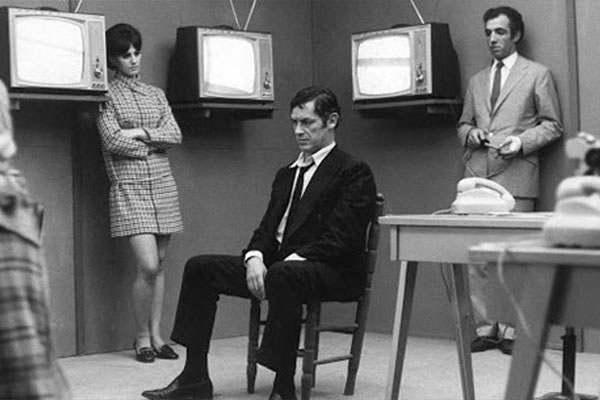
The storyline was created by Jorge Luis Borges and Adolfo Bioy Casares, two of the greatest Argentinian literature writers. The genre that both of them use the most in their short stories and novels (in the case of Adolfo Bioy Casares) is fantastic literature and science fiction. Thanks to their collaboration in the storyline, they created the basis of a movie that has the necessary elements to be considered part of the science fiction genre. Then, Hugo Santiago Muchink (a disciple of Robert Bresson) worked previously with Casares in the idea of the movie. Then, Santiago developed the screenplay with Borges, and both created the main plot of the film and their characters.
The movie is set up in the fictional city of Aquilea, where a group of armed defenders that are led by an old man named Don Porfilio (Juan Carlos Paz) try their best to prevent a group of invaders dressed with gabardine, places a machine that will accomplish their goal to create a mass invasion.
At first glance, the film could look like a plot of a thriller by Alfred Hitchcock, but the elements of science fiction established by Susan Sontag in her book “The Imagination of Disaster,” and Keith M. Johnston, also in his book “Science Fiction Film: A Critical Introduction,” are present in the film. In the case of the theory of Sontag, she mentioned that science fiction films have the fascinating motive of dehumanization, where the invaders have the characteristics of being dehumanized and they go unnoticed inside the society that they seek to invade.
This film accomplishes the reflection of the anguish for the psychological individual condition. The invaders in this case are humans; they don’t come from another planet and it is never mentioned where they came from and why they want to take the city of Aquilea. These invaders have cold and mechanical attitudes. The way that they organize and conspire to take control of the different entries of the city are similar to the human replicants of “Invasion of the Body Snatchers” (1956). Both kinds of invaders won’t rest until they accomplish their mission and besides, they have great economic resources that outweigh the resources of the hero, so they end up having more power than the defenders of the city.
Sontag mentions that the creatures of other worlds that pretend to conquer humanity are “that” and not “them” because the planetarian invaders have attitudes and movements of a dead man: they are cold and mechanical, they move in groups and lack emotions. In the case of “Invasion” (as it was mentioned before) the invaders obey to the most restricted military discipline and through achieving their goal, they create a regime lacking emotions and with hard discipline imposed in the entire city. When Herrara (Lautaro Murúa), the protagonist and hero of the film, fights against the invaders, they appear to be more efficient than him; they are the clear example of a technocratic being, devoid of emotions, without volition, calm and obedient to any kind of order.
Johnston analizes in his book that these films have cross-intertextual references between them and also with other genres that are influenced by literature, television, movies and other media. The influences of science fiction literature applied to “Invasion” were mentioned before, but it is important to point out that in one scene of the film, there is a metadiscursive element: one of Herrera’s assistants decides to go to the cinema and he watches an American western. This scene demonstrates the clear western influence in the film. So it can be said that this movie can be considered to be a subtle hybridization of genres.
The production design in science fiction films is one of the most important elements, especially when the story has notions of near future realism, like Johnston mentions in his book. But in the case of “Invasion,” Santiago used real locations across Buenos Aires. The city represents the fictional city of Aquilea: the streets, the buildings are characteristic of the city of Buenos Aires, as well as the Alberto J. Armando football stadium, best known as “la bombonera.” In this location, a crucial part of the film takes place; here is where the invaders place machinery that will create an impending mass invasion.
All of the locations that are seen in the movie have a very strong Argentine identity. Santiago manages to generate a dystopian and oppressed setting by creating abandoned places in the peripheries of the city. The visual language of Santiago has similarities with the French-style Nouvelle Vague. This film is considered as one of the few Argentinian films that explore the film technique of the French New Wave. The progression of the film is unconventional; the use of travelling and sudden camera movements creates an important dynamic. The editing of the film established an attractive combination between camera movements and the rhythm of a tango used in some scenes.
In terms of music, the film also proves to have a very strong Argentine identity not only for the tango, but also for the milonga that is heard in one particular scene; the lyrics of this milonga was created by Borges and Santiago because according to Santiago, the film could not miss the milonga.
Finally, it is important to highlight the allusion that the film makes with the military coup of Juan Carlos Onganía. Santiago escaped to France when the coup happened in Argentina, but then came back only because he wanted to work on “Invasion.” The film has many analogies between the coup of that time and the invaders of Aquilea, especially for the way in which the invaders act to neutralise what they considered an enemy of their schemes.
Years after the film was released, another coup took place in Argentina (also by the military) in 1976 and consequently it was the most violent and bloody dictatorship in its history, and after this, the conflict of the film became even more powerful and premonitory.
2. Man Facing Southeast (Hombre mirando al sudeste) (1986)
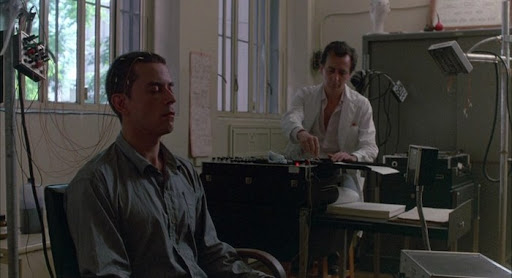
It’s the second Argentine film on the list where the name of Adolfo Bioy Casares appears because the story is inspired by his novel “The invention of Morel.” This film is also known for not receiving the credit that deserves for being a huge inspiration for the American movie “K- Pax” (2001)
“Man Facing Southeast” is a movie about Julio Denis (Lorenzo Quinteros), a psychiatrist who works in a neuropsychiatric hospital. One day a new patient named Rantes (Hugo Soto) arrives, and tells him that he is a being from another planet. Denis treats him as a paranoid, but Rantes enters into his life and makes him doubt if he really is a sick man or a being from another world. This leads Denis to rethink his profession and personal life.
The science fiction elements (established by Susan Sontag in her book) that appear in the screenplay are approached from the doubt that generates in the audience about the credibility if Rantes is really a being from another planet or a human with mental issues. Rantes has the characteristics that Sontag mentions in relation to the attitudes of the creatures that come from other worlds: he acts like a cold and mechanical being, and he assures Denis that he doesn’t help people for compassion, he just does it because of “a total rational reflection.”
Rantes criticizes humans for being so uninterested in protecting each other and also accused humankind for having the most dangerous weapon of all: “the human stupidity.” He also mentions that he is not the only inhabitant of his planet living on Earth and he states that there are “other Rantes” carrying out his same actions; this suggests that they move in groups (at a distance) and have a rigid military discipline to achieve their goal. At the same time, many of them deserted because they felt things for which they are not “programmed”; for example, “the perfume that enters through a window, the smell of a woman, a sticky sax.”
Rantes’s rigid attitudes are demonstrated when he stands in the park of the hospital, looking to the southeast without emitting movement. According to him, he manifests himself like that because in that way he “receives and transmits information to his planet.” However, Denis questions Rantes alleged “frivolity.”
The way in which Rantes expresses himself is a clear representation of the characteristics that Keith M. Johnston mentions in his book “Science Fiction Film: A Critical Introduction” regarding the robots that appear in science fiction films (such as HAL 900 in “2001: A Space Odyssey” (1968)): a voice without inflections, slow and deliberate. He even has “the obsession with his human partner”; Rantes is obsessed with Denis.
The only thing that Rantes does not have, unlike HAL 900 and other types of robots that Johnston mentions in his chapter Theory, genre and science fiction, is the suggestion that he hides something sinister. Although throughout the film it is evident that Rantes is hiding something from his past, the audience does not fear to know what it is that he hides, but rather feels compassion and pity for him.
The film does not answer the question about whether Rantés is a being from another planet or a human wanting to escape from family issues. The director Eliseo Subiela suggests both of these responses in different scenes: in one scene, the audience witnesses the telekinesis powers of Rantes, and later it is suggested that it was all in his head, but at the same time the audience asks the same questions that Denis has about his rationality.
Each of the classic elements of the genre that appear in this film is used symbolically through images that Subiela composes in his shots. His vision or realization proposal as director is a traditional one. We have conventional shots and also wide shots that allow us to appreciate the space where the characters move through, so in this way highlights the ancient architectural structure of the neuropsychiatric.
At times there are abrupt cuts of inserts within a scene, representation of what Denis is thinking. Among the images there is a painting of the painter René Magritte, which is a reference to the color palette and the type of lighting that is carried out in the film. The light and dark lighting of the interiors of the neuropsychiatric and the exteriors is highlighted with little contrast and low levels of saturation in the colors, complementing with the state of strangeness generated by the character of Rantés and the uncertainties and baffles of Denis.
3. Moebius (1996)
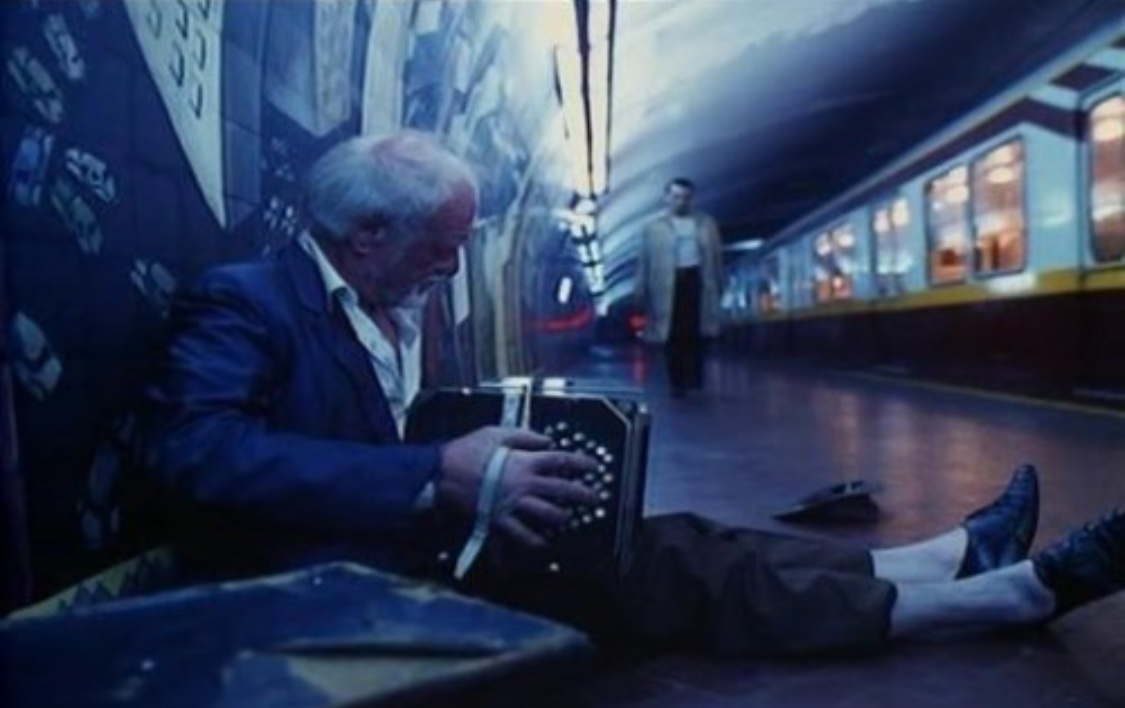
This film is based on the story “A Subway Named Moebius” by Armin Joseph Deutsch. This story had already been adapted to a German film called “Möbius” (1993) but the Argentine adaptation contains Borgean elements that generate strange and complex experiences on the characters, and also goes deep into a scientific theory that explains the disappearance of a train in the subway.
When a complete train disappears in the subway of the city of Buenos Aires, the general director of the subway system, Marcos Blasi (Roberto Carnaghi) calls the architect of the tunnels to find the cause of the strange disappearance. But thanks to his absence, a young topologist named Daniel Pratt (Guillermo Angelelli) comes to help and the investigation begins based on the lost plans of the tunnels and the mathematical theories created by his former scientific professor, Mistein (Jorge Petraglia) who designed the complex network of the subway and whose whereabouts cannot be found. Thanks to the help of a girl, Pratt finds the answers of the disappearance of the train, but that knowledge will take him to an unknown world of the subway network.
The film achieves in creating a fearful and oppressive atmosphere. It takes place in a dystopian and dark version of Buenos Aires; the characters live for machines and constructions, just as Mistein’s character tells Pratt, “… man has invented numerous machines but forgets that he himself is a machine much more complicated than all he has invented.”
The way that director Gustavo Mosquera approaches the science fiction genre is by using some elements of psychological terror. While the film is not a horror movie, the theme of the story, the atmosphere, and characters could be part of that genre. Even so, the film remains within the margins of science fiction. Just as Bruce F. Kawin in his book “Film Genre Reader III” establishes the difference between science fiction and horror, in this film the determination of the science fiction genre happens, not only for the elements of the script but also for the attitudes of the characters that are generated around the elements that appear in the story. In other words, they are different because of their attitudes about curiosity and openness of scientific knowledge, and both genres end up being comparable in this film, because both tend to organize around the confrontation between the unknown and what the human being should or should not know.
This film includes a scientist who develops a mathematical theory, which leads him to create a “perfect machine” that is revealed at the end of the film. From these concepts, the important thing is to discover the attitude of the characters regarding the discovery of the impossible, or in the case of the film, the attitude of the protagonist to discover the reason for the disappearance of the train. In this way, “Moebius” is a science fiction and mystery film.
The film was shot by students of Universidad del Cine. They had the challenge of shooting in the real locations of the subways of Buenos Aires. Great work was done in terms of cinematography as well as original music, and through the composition of the shots, an oppressive and claustrophobic atmosphere is achieved with the limited and enclosed spaces.
Mosquera uses establishing shots to set the scenery where the characters are moving and also creates a “dynamic impact” through internal or external movements of the shot and the camera. He positions the camera in narrowed spaces and uses a multi-layered composition, because he put elements in the frame that interact with the characters and builds up a dynamic relation with them. This generates good dynamism thanks to the level of depth that the characters and elements are in the frame, achieving a dynamic frame with internal movement (thanks to the characters) or external (by the camera movement).
The strange atmosphere is achieved thanks to the characters’ faces, the dark music, the stunning cinematography, and the dirty, mechanical and dark locations. The film manages to create similarities with the universe of Jean-Pierre Jeunet like in “The City of Lost Children” (1995) or also the dread of a supernatural mystery like Adrian Lyne’s “Jacob’s Ladder” (1990). There is also a brilliant reference to the character of “the death” of Ingmar Bergman’s film “The Seventh Seal” (1957) that should not be overlooked in a first shot of a character in the third act.
4. The Fifth Power (O 5° Poder) (1962)

While it may seem like a spy movie, the plot of this film directed by Alberto Pieralisi allows analogies with several science fiction elements established by Susan Sontag.
The film is about secret agents of a foreign country that arrived to the coasts of Rio de Janeiro to perpetuate a “coup” in Brazil, through the use of a new technique of subliminal messages, which are sent through the radio and television electromagnetic waves to influence the population and perpetuate a civil war, so they can persuade the government to allow invaders to appropriate the natural resources. Only a few people who do not watch television or listen to radio are immune to these subliminal messages, and they assume the responsibility to avoid the coup without really knowing what they are facing.
Sontag, in her book “The Imagination of Disaster,” establishes several types of classic scripts of the sci-fi genre. Among her descriptions, she establishes the classic science fiction script in five phases: in the first phase is “the arrival of the object (the appearance of monsters, landing of the strange spaceship, etc).” In the case of “The Fifth Power” at the beginning of the film, the invaders/agents arrive from another country and want to invade Brazil by manipulating the public opinion. These invaders don’t come from another planet, but they have the same goal as an alien invader: control or destroy the government of the country so they can take over the natural resources of the land and also manipulate the minds of the citizens. These agents are “those” and not “them” as well Sontag establishes in relation to the mythology for the contemporary negative imagination of the impersonal.
The plan carried out the group of invaders has all the characteristics of a science fiction film: the manipulation of electromagnetic waves by means of a machine that has an eye that turns on every time it sends a subliminal message to the signals of radio and TV in order to manipulate citizens and turn them into inanimate beings with regular and unalterable behaviors; obeying the “eye” that leaked into their media to hypnotize them and initiate total destruction in society. When Carlos (Osvaldo Loureiro), the hero of the film (who does not watch TV or listen to radio) is trying to help a friend he says to him, “Can’t you see that they are being hypnotized?” “Become robots!”
The film has a strong contemporary analogy in relation to the influence that the media can have on society. In this sense, the film turns out to be “markedly moralistic” as well as the classic films of the genre (as Sontag mentions) in relation to the characteristic message referring to the appropriate use of science against the insane and obsessive use of it. In the case of “The Fifth Power,” the moralistic message would be that the obsessive use of TV and radio transforms users into insane people, and the only ones that can save the country from chaos are the “anti-TV” and “anti-radio” people.
Pieralisi develops good camera movements and works on an original proposal. The Brazilian identity stands out as it’s filmed in real locations in Rio de Janeiro: the streets, buildings, and wildlife are appreciated, and the last act takes place in the huge statue of Christ the Redeemer. It is a film that combines a classic Hitchcock movie like “North by Northwest” (1959) with “Invasion of the Body Snatchers” (1956).
5. The Year of the Plague (El Año de la Peste) (1979)
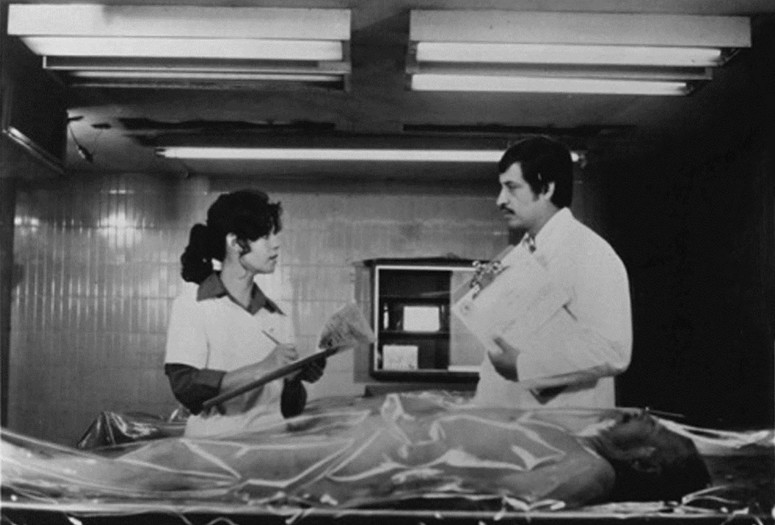
The script was written by the famous Colombian writer Gabriel García Márquez, who adapted the novel by Daniel Defoe “A Journal of the Plague Year,” and the Mexican film was directed by Felipe Cazals.
The film takes place in a Mexican city with 15 million inhabitants where a strange epidemic breaks out. A doctor tries to alert the authorities and specialists agree that it is an epidemic, but the government ignores the warnings and ends up covering up an epidemic similar to the one that hit Europe in the Middle Ages, causing chaos and death in the city streets.
“What can be done with a government that doesn’t have the guts to see the reality?” are the words that a public official says to the mayor of a city in Mexico that is submerged in a deadly plague, and he hides this truth from society. Although the film has concepts that can turn it into a horror movie, it also has elements of science fiction. These elements apply to what Susan Sontag establishes in her different concepts of the classic genre script: the hero that tries to warn the local authorities about a “thing” that is a threat to society, but nobody believes it, and the advice of other people consulted proves to be useless. In the case of this film, the doctor who tries to warn the authorities does not have the power to stop the plague that plagues the city.
The film has several protagonists; the points of view of the characters vary according to their public officials, and in this way the criticism that the film makes is regarding the discrimination that some politicians execute against the marginalized people that live in the peripheries of the city. It also addresses the lies that the government announces to society about the real situation of the plague, so that people do not panic, and so the government doesn’t lose political and economic power. By municipal orders, agents with special suits (which seem to come from another planet) spray a yellow foam onto any person living in a street situation and without consent. In this way, the fear of the upper class is presented: being infected with a disease that may come from a marginal person living in the streets.
Cazals worked a documentary style that manages to generate a more realistic impact in terms of plague, marginality, and the lies of politicians. It shows real images of people with diseases and poor people living in the peripheral villages of the big city. This documentary and fiction style was very valid in the ‘70s.